- Home
- TV History
- Network Studios History
- Cameras
- Archives
- Viewseum
- About / Comments
Skip to content
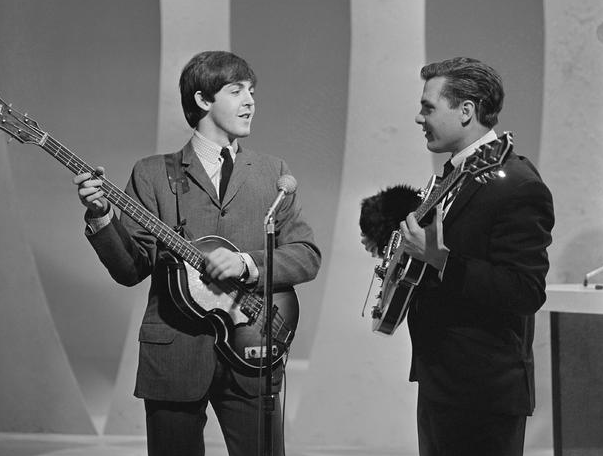

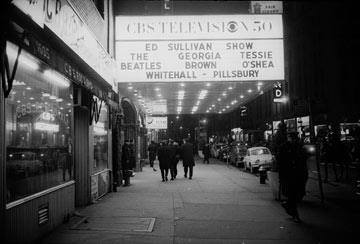

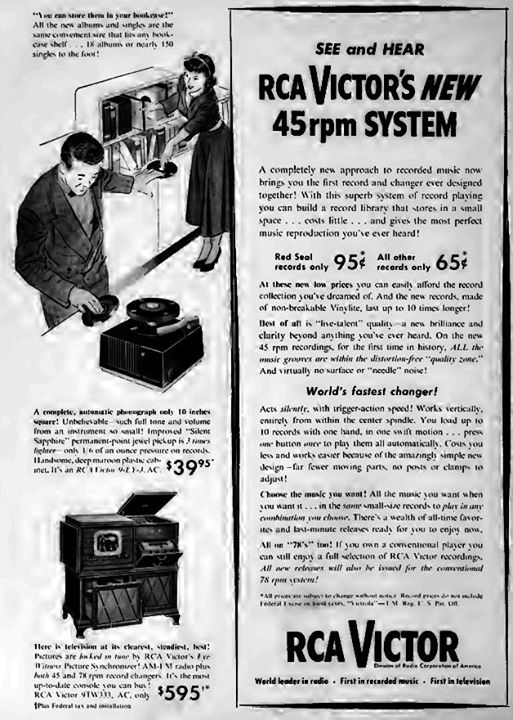



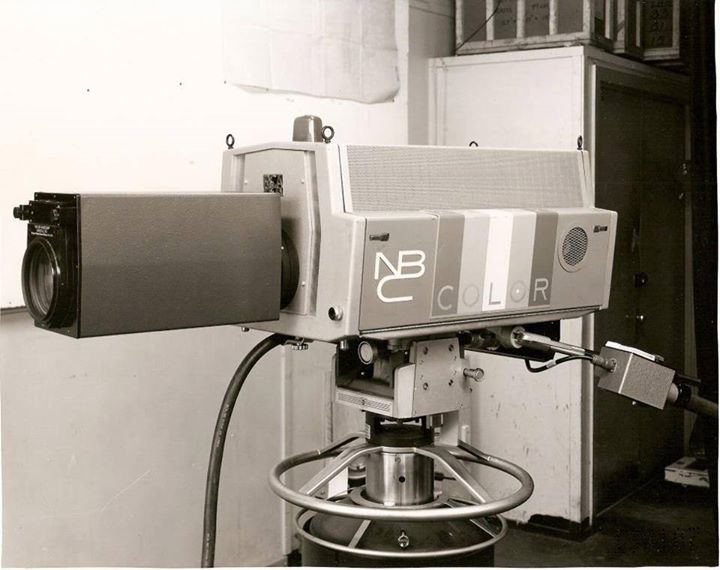

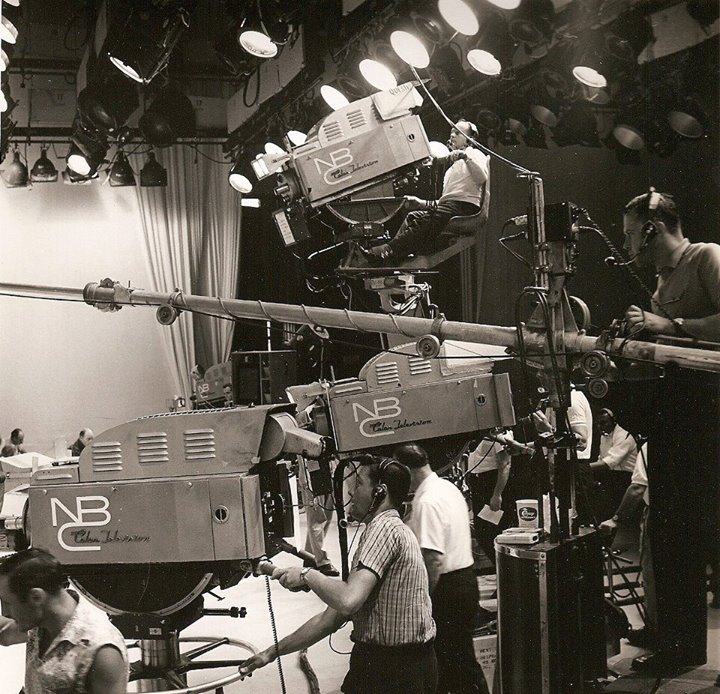



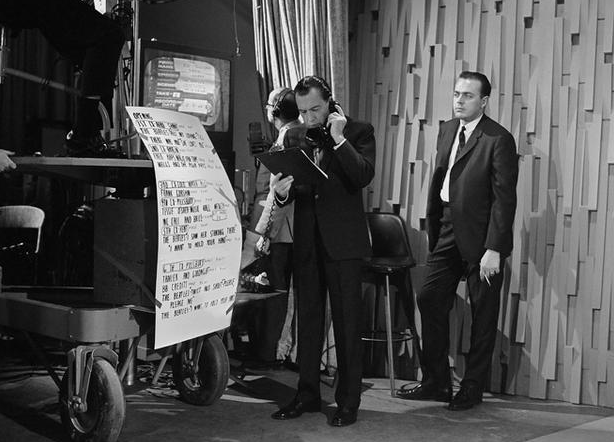

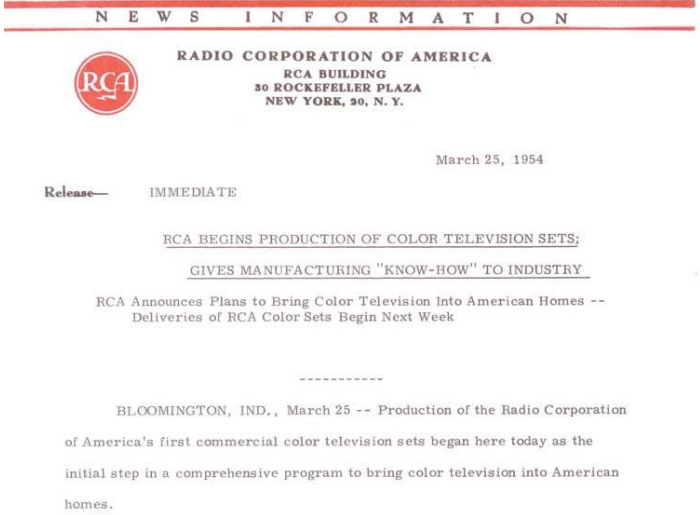

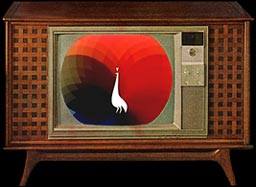

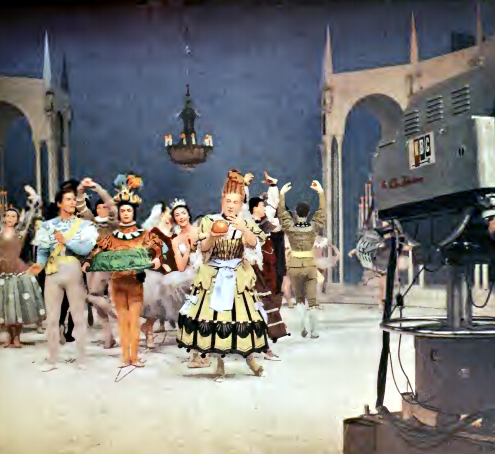

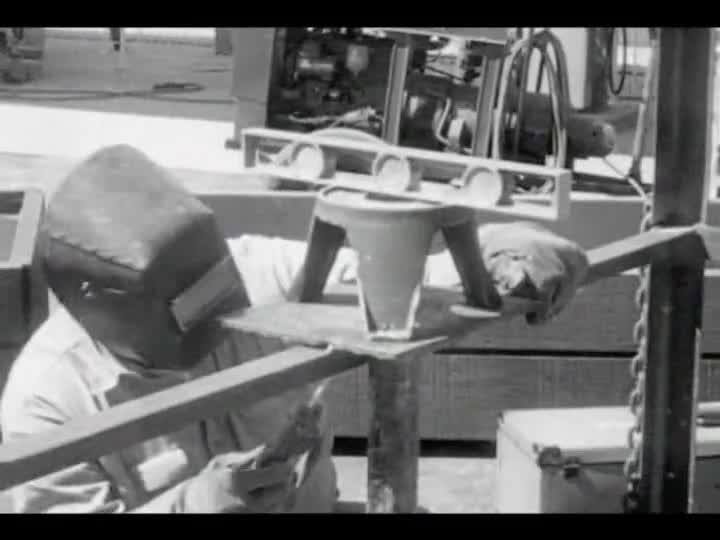

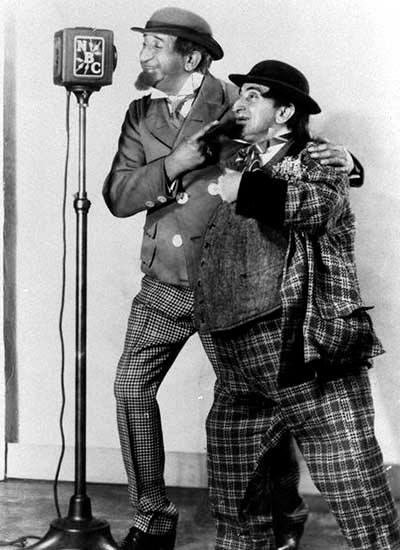

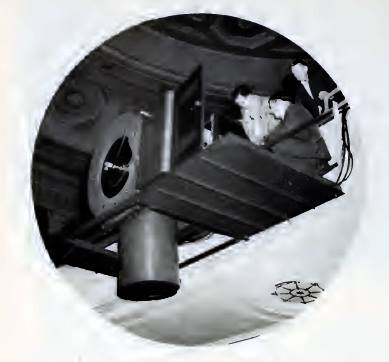

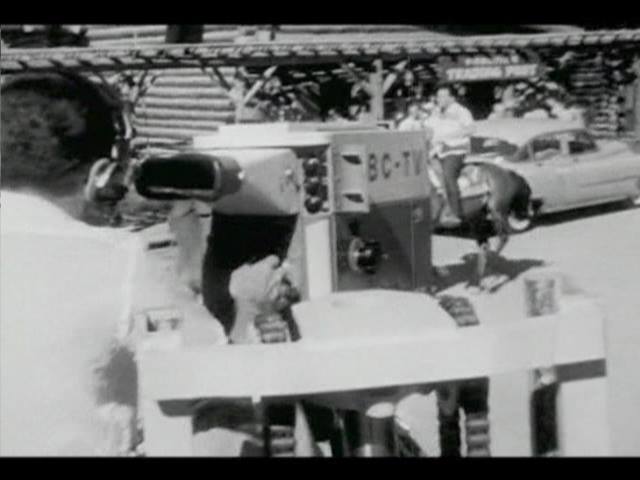

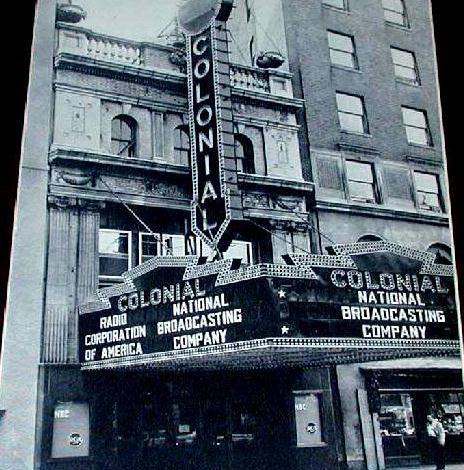

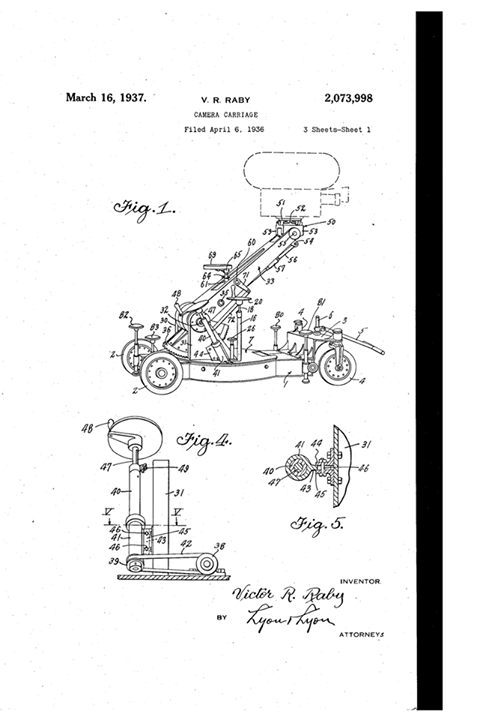

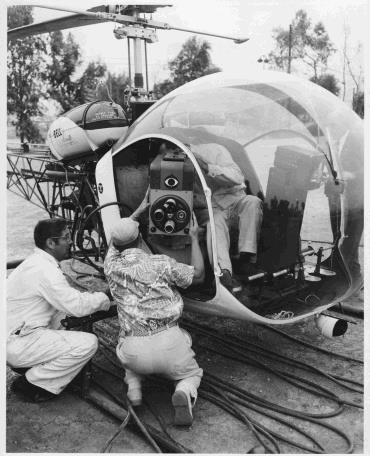

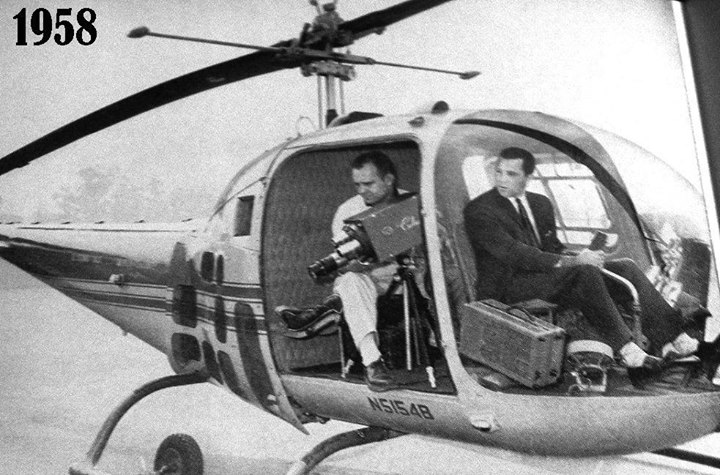

Posts in Category: TV History
Page 96 of 136
« Previous
1
2
3
4
5
6
7
8
9
10
11
12
13
14
15
16
17
18
19
20
21
22
23
24
25
26
27
28
29
30
31
32
33
34
35
36
37
38
39
40
41
42
43
44
45
46
47
48
49
50
51
52
53
54
55
56
57
58
59
60
61
62
63
64
65
66
67
68
69
70
71
72
73
74
75
76
77
78
79
80
81
82
83
84
85
86
87
88
89
90
91
92
93
94
95
96
97
98
99
100
101
102
103
104
105
106
107
108
109
110
111
112
113
114
115
116
117
118
119
120
121
122
123
124
125
126
127
128
129
130
131
132
133
134
135
136
Next » Beatles 50th Sullivan Anniversary Count Down…16 Days
On January 25, 2014
- TV History
Beatles 50th Sullivan Anniversary Count Down…16 Days
Who is this man and why is he on stage with The Beatles? That answer in a moment, but first the scene must be set. It was only last year that I discovered that the Beatles third Sullivan appearance on February 23 was in fact, the first time they had ever played in America. That performance of two song sets with two different stage sets was taped in the early afternoon of February 9 before they performed two live sets with two different stage sets. But none of this almost happened! That day George Harrison had the flu and a fever of 103. Sullivan’s doctor was nursing him at the hotel while The Beatles road manager, Neal Aspernall stood in for George at the day’s first (closed to the public) dress rehearsal where the audio and camera blocking would be worked out. Just before the 3PM taping, Harrison arrived and and got a quick half song walk through just in time.
‘The Night That Changed America’
On January 25, 2014
- TV History
‘The Night That Changed America’
This Sunday night, Ken Ehrlich will produce the Grammy Awards show and the next night, he’ll do the same for the Grammy’s tribute to The Beatles. That show will air on CBS February 9 at 8PM to mark the 50th anniversary of the band’s first appearance on Ed Sullivan. Paul McCartney and Ringo Starr will attend, but no one knows if they will play together. The Eurythmics will reunite for the show which will also feature John Mayer, Keith Urban, Maroon 5, Alicia Keys and John Legend. I’m sure there will be some surprise guests as presenters as some of the original footage will be used. Stay tuned for more.
65 Years Ago This Month, RCA Introduces The 45 RMP
On January 24, 2014
- TV History
65 Years Ago This Month, RCA Introduces The 45 RMP
In January of 1949, RCA rolled out the “single”, a 7 inch record that played at 45 rpm. This was in retaliation to the CBS 33 1/3 rpm “long play” albums that were introduced the year before. Prior to these developments in ’48 and ’49, records were played at 78 rpm on thick shellac compound disc and could hold only about five minutes per side. The CBS albums were much better fidelity and held almost thirty minutes per side but with all those songs, cost more. RCA was producing LPs too, but had to pay CBS for the technology, so, they introduced the 45 in hopes that their popularity would force CBS to enter the 45 market and owe RCA. Eventually they just shared the 33 and 45 technology. At the link below is RCA’s first ever 45 release which is an introduction to the library of 45s that would be available soon. There is no “first artist on 45” as the first selections were released at the same time which included several genres of music.
http://www.youtube.com/watch?v=ebRx7FN6vlc
Beatles 50th Sullivan Anniversary Count Down…17 Days
On January 24, 2014
- TV History
Beatles 50th Sullivan Anniversary Count Down…17 Days
The photo on the left was taken from the control room during the dress rehearsal for the February 9 live show. Most of the screaming girl footage was shot during this very long rehearsal and inserted via videotape into the live broadcast. Remember, The Beatles had already taped the February 23 show earlier this same day and all the audio settings had been worked out in the days first rehearsal (closed to the public) and worked well in the taping at 3, BUT…during the lunch break (3:30 -4:30) someone in maintenance wiped off the grease pencil marks on the audio board! The day’s second dress rehearsal lasted well over an hour as The Beatles asked for playbacks of the first session to compare the sound. Candy Cushing and others that were there have told me that there was quite a bit of back and forth with the band as they worked out the audio problems. Sullivan also did some back and forth with the audience during the long lulls and this is when the famous shot of him in a Beatle wig was taken.
This Is The ONLY TK42/43 NBC Ever Owned…Shocking But True
On January 24, 2014
- TV History
This Is The ONLY TK42/43 NBC Ever Owned…Shocking But True
As you know, RCA owned NBC and was the world’s leading maker of television broadcast equipment so…it’s quite a wake up call when your own network doesn’t buy your “next big thing” in color cameras. Here’s the bitter sweet back story. The RCA TK42 came out in 1965, the same year Norelco debuted the PC60 Plumbicon camera. The TK42 had a black and white 4.5 inch tube for luminance and three Vidicon tubes for color. Frankly, the Norelco made a better picture and CBS bought them by the dozens. NBC’s equipment manager, Fred Himelfarb who was a former RCA engineer, was in on the testing but did not buy them for the network. He did however buy 35 Norelcos for the sports trucks. Even when the TK42 came out, another group of RCA engineers was working in secret on the TK44 which at that point was designed with three Vidicon tubes. In ’66, RCA came out with the TK43 with an external lens and took one to NBC NY to use on the network’s mid term election coverage. It was not ready at air time but an NBC logo was applied and a cameraman put behind it and was used as a prop of sorts. Later this camera went to the fifth floor for use in an “always on” news studio used for breaking news and WNBC’s 2AM news briefs. In a way, it all worked out the NBC’s advantage because RCA engineer Lou Bazin, who was heading up the TK44 team, got an unexpected invitation to visit Norelco’s US tube maker. Amperex was a Phillips subsidiary (as was Norelco) and the US source for the new Plumbicon tubes and yokes…the main component of Norelco’s ‘magic pictures’. This was a ‘no no’ as Amperex was not authorized to share this technology with RCA, but, Phillips was way over there in Holland and Amperex was just a short ride from Camden. There was money to be made is selling tubes to RCA. The plumbicon tubes were made in Rhode Island at another Phillips subsidiary. So, by waiting three years and keeping their well maintained fleet of TK41s humming along, NBC saved a lot of money by waiting for the TK44A Plumbicon which came in 1968. It wasn’t all tears at RCA though as nearly 400 TK42/43s were sold.
One Of My All Time Favorite Photos
On January 24, 2014
- TV History
One Of My All Time Favorite Photos
I’ve had this 8 x 10 glossy photo since 1966. Starting at age 14 (’64) I would write to NBC, CBS and ABC asking for photos of the cameras in action. Mrs. Katheryn S. Cole at NBC was gracious enough to always reply with big packs of photos like these. Only in the last year or so have I come to know the name of one of the cameramen from posts here by his daughter. Manning the TK41 at the bottom is long time NBC cameraman Don Mulvaney who was also one of NBC’s first portable camera operators starting with the 1952 political conventions. This shot is on the set of ‘The Mitch Miller Show’ from NBC Brooklyn. Don’s camera is mounted on the electric RCA TD 9 pedestal. The center camera is mounted on a McAlister crab dolly and the top camera is mounted on a Chapman crane, but it not an Electra (like in 8H) as the seat is different. Notice under the crane camera the wedge between the cradle head and camera that tilts it down about 30 degrees. This is done to give more flexibility to tilt down because without it, the camera would always be at the forward end of the pan head track and unable to tilt down and farther. Notice also the boom cable goes to a ceiling port in order to eliminate as many floor cables as possible. FYI, the sleeveless guy is one of the dancers in a medley of country songs.
The First Television News Footage? Quite Likely…
On January 23, 2014
- TV History
The First Television News Footage? Quite Likely…
In 1933, the Don Lee owned experimental station in Los Angeles, W6XAO is reported to have acquired film shot the afternoon of March 10, 1933 of the Long Beach earthquake. It was almost 6PM local time when it hit, but using rapid processing film development (where the negative is shown with reverse polarity to make it appear as a positive print) they were able to get it on the air that night. These were the days of mechanical TV and only a few sets even existed, but this is an important event because even network television news shows which started after WWII used newsreel footage acquired from outside sources. The early local television stations were the pioneers in news film because, unlike the networks, there were no big newsreel companies that they could rely on for images of local news events. Thanks to EarlyTelevison.org for the photo.
Beatles 50th Sullivan Anniversary Count Down…18 Days
On January 23, 2014
- TV History
Beatles 50th Sullivan Anniversary Count Down…18 Days
February 9, 1964 was The Beatles debut on American television but it was more than just a performance…it was a turning point for a country that was still in shock over the assassination of President Kennedy just a few short months before. We’ll count down till the celebration with photos and back stories that I hope you’ll share. In the photo below, we see Ed Sullivan conversing with the control room during rehearsal. There were actually four performances on February 9th….a 12 noon dress rehearsal and a 2 o’clock taping of two sets of songs that would air February 23rd. Then there was the 5 o’clock dress rehearsal for the 8 o’clock live show. There were three audiences that day as the noon rehearsal was closed. 50,000 ticket requests came in but only three audiences of 700 were able to be there live. Notice in this photo, Ed has a spare Q card lashed to the boom stand…he also reads from a paper toll teleprompter on the front of Camera 1, but just to make sure he doesn’t flub is intro, he had it put in two places. It was quite a day.
And The Color Race Is ON!
On January 22, 2014
- TV History
And The Color Race Is ON!
Believe it or not, In April of 1954 Westinghouse began selling the first home color television set. They beat RCA by several weeks and RCA rushed the CT 100 into production on March 25. During the color wars between CBS and RCA over the compatible color systems, manufacturers were reluctant to commit to building sets till the dust had settled, and when it did, the RCA Dot Sequential system had beaten out the CBS Field Sequential system. Many radio and TV manufacturers had been a part of the NTSC (National Television Standards Committee) and already knew the technical specs and were ready to go in early 1954. The Westinghouse set sold for $1295. RCA’s CT-100 sold for $1000, but by August RCA had dropped the price to $495. GE sold its 15 inch set for $1,000, and Sylvania’s cost $1,150. Emerson rented color sets for $200 for the first month and $75/month thereafter. All of these were 15″ screens but in ’55, RCA came out with the 21″ color screen and even though they lost money on every set, they recalled the 15″ sets and swapped them for the 21″ models at no cost. In the long run, RCA made mega millions on color television. When RCA was sold to GE in the 80s, GE paid $6.2 Billion but there was $2 Billion in the bank so GE got RCA/NBC for $4.2 Billion.
Remember Your First Color TV Set?
On January 22, 2014
- TV History
Remember Your First Color TV Set?
This RCA model is the one our family had and we got it in 1964. What do your remember about your first color set?
‘Producer’s Showcase’, NBC 1954-1957
On January 22, 2014
- TV History
‘Producer’s Showcase’, NBC 1954-1957
This “spectacular” was a creation of NBC President Pat Weaver and was overseen by the great producer/director Fred Coe. Thirty seven elaborate episodes of this 90 minute, live color show aired at 8PM every forth Monday. Production was done at NBC Brooklyn. The ambitious series presented original musicals or plays, re-staging of Broadway productions, great concert artists, and tribute programs. Producers’ Showcase presented the first international show with live remote locations (‘Wide Wide World’), and the first full-length Broadway production on color television which was ‘Peter Pan’. Only top talent starred in each unique production and the list of names is a who’s who including appearances by movie stars Humphrey Bogart, Lauren Bacall and Henry Fonda in ‘Petrified Forrest’, Broadway’s Mary Martin in ‘Peter Pan’, ballet stars Margot Fonteyn and Michael Somes in ‘Cinderella’ and ‘Sleeping Beauty’. The series earned eight Emmy Awards and dozens of nominations. The photo is from ‘Cinderella’ which aired April 29, 1957 and there is a short clip from the Kinescope capture.
Exclusive Rare Video! ‘Operation Disney’Behind The Scenes With ABC
On January 21, 2014
- TV History
Exclusive Rare Video! ‘Operation Disney’
Behind The Scenes With ABC On Disneyland’s Opening Day
First, please share this…your friends will appreciate it as Eyes Of A Generation is the only place you can see this rare footage. This was shot by ABC over the three days prior to the Sunday, July 17, 1955 grand opening of Disneyland. This footage was not broadcast at the time, but may have been shown if ABC and Disney did a rebroadcast of the celebration at an anniversary. I think this it was done as an in-house project to show to ABC shareholders, sponsors and affiliate stations, as well as to Disney executives. Remember, ABC had a partial ownership of Disneyland. This was cut to fit in front of the live broadcast footage that was captured via Kinescope.
NBC Radio’s First Day & The First Network Stars
On January 21, 2014
- TV History
NBC Radio’s First Day & The First Network Stars
NBC was America’s first radio network and the inaugural program was broadcast on sixteen stations on November 15, 1926. The show originated from NYC, Chicago and Independence Kansas. The “official” part of the broadcast came from New York’s WEAF where Sarnoff and other leaders of RCA, Westinghouse and GE spoke. The new National Broadcasting Company was divided in ownership among RCA (50 percent), General Electric (30 percent), and Westinghouse (20 percent). From Chicago, the popular vaudeville comic team Lewis Fields (L) and Joe Weber (R) did their act, and in Kansas, columnist and all around “fun poker” Will Rogers spoke for a while. Both Rogers and Fields & Weber became regulars and were the first ever network stars. Tomorrow, the Red, Blue, Gold, Orange and other networks of NBC Radio.
RCA Color Projection Television
On January 21, 2014
- TV History
RCA Color Projection Television
In October of 1951, RCA demonstrated it’s first color projection unit at The Colonial Theater. The guests saw an RCA color film on the unit and a live feed from NBC Studio 3H (where the live “coffin” color cameras were being tested). The projected images made a picture that was 9 by 12 feet. This photo is from a few years later and is being installed at NBC’s newest color studio at The Ziegfeld Theater, which would become the home of Perry Como. This new unit made a picture that was 18 by 28 and projected it’s image on a screen above the stage so the audiences on the main floor and in the balcony could see the shots being taken by the 4 TK41s. This unit has a 42 inch mirror, a 26 inch lens and uses 80,000 volts. There was also a black and white version and several were in use in New York’s television theaters including CBS Studio 50 (Ed Sullivan), and NBC’s properties like The International (Show Of Shows) and Hudson Theaters (Tonight With Steve Allan). In 1951, several dozen of the monochrome projectors were in use across the country in cities that were part of the Theater Television Network that carried occasional live, closed circuit programs like prize fights, races and other special interest events.
ABC At Disneyland Opening Day…29 Cameras
On January 20, 2014
- TV History
Exclusive Video Coming Tomorrow!
14 minutes of ABC film showing the preparations to broadcast the opening of Disneyland with 29 cameras, July 17, 1955. Here are some screen shots of what’s coming!
The Granddaddy Of Color Studios…The Colonial Theater
On January 20, 2014
- TV History
The Granddaddy Of Color Studios…The Colonial Theater
I had given up finding a photo of the theater’s face when NBC and RCA owned it, but thanks to Lytle Hoover, we finally have it. This is where the fist production models of the RCA TK40 went into service in March of 1953. The first several months, there was only testing via closed circuit, but on August 30, 1953, the first publicly announced experimental broadcast in compatible color TV of a network program was presented by NBC of “St. George and the Dragon” on the ‘Kukla, Fran, and Ollie Show’. NBC/RCA had owned the building for several years and had done black and white shows from here and in October 1951, RCA had exhibited a color TV receiver-projector here which provided color pictures on a 9 x 12 foot theater screen. In late ’52, RCA/NBC began the process of making the theater into the first all color television studio. The second NBC colorcasts came from this studio on October 31, 1953 and was a one hour presentation the opera “Carmen”. The third colorcast was the November 22, 1953 ‘Colgate Comedy Hour’, with Donald O’Connor (the first commercial colorcast). By the way…these colorcasts were only viewed in color by closed circuit. The color burst was removed before being broadcast, and the programs were seen by the general public only in black in white. Only 28 TK40s were made as by late 1954, the TK41 had taken it’s place with with significantly reduced rack space, tube count, and power requirements. Thanks to Lytle Hoover and Ed Reitan for their research and help.
The First Camera Dolly, 1936
On January 20, 2014
- Archives, TV History
The First Camera Dolly, 1936
In the patent application, this is referred to as a “camera carriage” and as you can see, it has only three wheels. Designed by Victor Raby and made by Studio Equipment Company, these are now rare items and only a couple of these are still around. One of the survivors is shown below under a GE Iconoscope camera from WRGB and is located with the camera at the GE Museum in Schenectady NY. By early 1937, Fearless Camera Corp had introduced the four wheel Panoram dolly which was the preferred model. Television was still in the infancy stages so most customers were movie studios, but the WRGB crew has to be credited for being innovative.
I Wonder How This Worked Out?
On January 19, 2014
- TV History
I Wonder How This Worked Out?
Below, we see an RCA TK30 owned by CBS being mounted in a Bell helicopter. I don’t know what they are shooting, but if the helicopter goes up more than a couple of hundred feet, there will be big problems for all. Notice this is a cabled camera and not a microwave wireless unit. Hopefully this was after 1956 when video tape became available. Can you imagine doing this for a live shot?


First Airborne Color
On January 19, 2014
- TV History
First Airborne Color and First Live Use Of Color Video Tape
There are several elements to this story, so let’s start with the mystery of the camera itself. Yesterday our friend Lytle Hoover, of RCA’s Broadcast Division in Camden, sent the photo on the left to several television camera collectors. We were trying to identify the RCA color camera in the helicopter and after a few back and forths, Lytle found the rare photo on the right. The right photo is of an early version of the RCA color medical camera and is probably the prototype and probably built in late 1956. In late 1957, several units of the final design were in use at teaching hospitals. Those color medical cameras looked like large TK11s, complete with the side handles but no viewfinders. They were called RCA TK45s but are not to be confused the the TK45A studio camera that came along in 1973. Now, on the next part…where it was used. Newspaper reports describing the upcoming color coverage of the 1958 Rose Parade by NBC mentioned a color camera that would broadcast overhead shots from a helicopter. An aerial color shot would be a first. The other fist was the use of color video tape for the first time in a live broadcast. Now, judges pick the winning floats before hand, but back then, the judges voted on the best floats as they came by the reviewing stand. NBC taped the parades floats so they would be able to play back images of the winners after the parade when the judges made their awards.
Page 96 of 136
« Previous
1
2
3
4
5
6
7
8
9
10
11
12
13
14
15
16
17
18
19
20
21
22
23
24
25
26
27
28
29
30
31
32
33
34
35
36
37
38
39
40
41
42
43
44
45
46
47
48
49
50
51
52
53
54
55
56
57
58
59
60
61
62
63
64
65
66
67
68
69
70
71
72
73
74
75
76
77
78
79
80
81
82
83
84
85
86
87
88
89
90
91
92
93
94
95
96
97
98
99
100
101
102
103
104
105
106
107
108
109
110
111
112
113
114
115
116
117
118
119
120
121
122
123
124
125
126
127
128
129
130
131
132
133
134
135
136
Next »